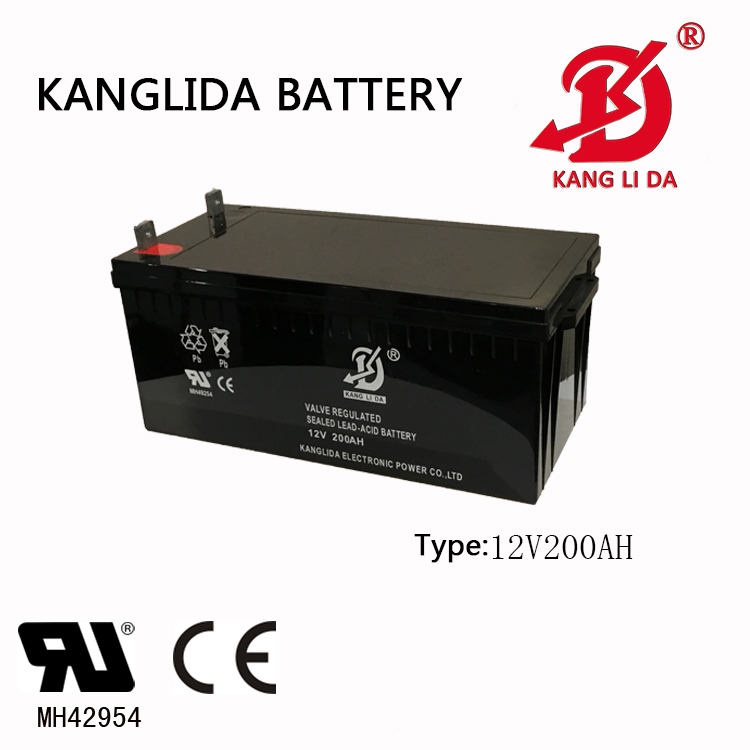What are the common misunderstandings about battery maintenance?
Storage battery is a device that directly converts chemical energy into electrical energy. It is a rechargeable battery designed to recharge through a reversible chemical reaction. It usually refers to a lead-acid battery, which is a type of battery. , Belongs to the secondary battery. It works by using external electrical energy to regenerate internal active materials during charging, storing electrical energy as chemical energy, and converting chemical energy into electrical energy output again when it needs to be discharged, such as mobile phone batteries commonly used in life.

Because of various advantages and some reasons, batteries are now more and more widely used, but many people do not know the battery very well, and many people do not even know some problems about battery maintenance, and other industrial equipment. Similarly, batteries also require regular maintenance. What are the common misunderstandings about battery maintenance? How much do you know about this? Today, the editor of Zhengzhou Kang Lida Electronic Power Co., Ltd. will give you some knowledge about this issue and hope it will help you.
1. "Maintenance-free lead-acid batteries" do not require regular maintenance
The so-called "maintenance-free" is compared with the traditional open battery does not require regular addition of electrolyte or distilled water, rather than the need to periodically check its 'health'. Without regular inspection of these maintenance-free batteries, it is very prone to deterioration and failure. Light leakage corrosion, internal short circuit, heavy will cause local fire, causing fire.
What are the common misunderstandings about battery maintenance?
2. Maintenance battery only needs to monitor voltage
Due to cost factors, some engineers often use a multimeter to test the float charge voltage of the battery. The online system currently on the market also monitors and evaluates the health status of the backup battery or energy storage battery through the battery voltage. However, the float charge voltage can only reflect whether the charger is working properly, but not the health of the battery. When the battery capacity decreases, the float charge voltage is likely to remain at an imaginary high due to the control of the UPS charger. This is why in many cases the voltage of the UPS shows normal, but after a power failure, the battery pack quickly loses power and cannot be discharged.
The open circuit voltage of the battery (the voltage after the charger is turned off) can reflect the capacity state of the battery to a certain extent. However, it can be seen from the above figure that the open circuit voltage will only change significantly when the battery capacity drops severely. The internal resistance of the battery changes much faster. In the middle and early stages of capacity decline, the internal resistance will increase significantly. Therefore, the internal resistance is found to be deteriorated earlier than the voltage.
Three, a multimeter for measuring the internal resistance of the battery is enough
There are three reasons why the internal resistance of the battery cannot be measured with a multimeter:
1. Method-As we all know, multimeter resistance measurement is based on Ohm's law, Ohm's law only applies to metal conductors. But the storage battery is a chemical battery, and its internal chemical reaction cannot be calculated by Ohm's law, so the internal resistance value measured by a multimeter has no reference significance. At present, there are basically three methods for measuring the internal resistance of the battery: AC injection to measure the internal resistance, AC discharge to measure the conductance method, and DC internal resistance to discharge method. It is recommended that engineers use professional instruments to accurately and reliably test the internal resistance of the battery.
2. Accuracy-The internal resistance of the battery is generally in the milliohm level, but the resolution of the resistance file of an ordinary multimeter is about 0.1Ω, which does not meet the test accuracy requirements.
3. Safety—The resistance of the multimeter does not allow voltage to be measured, but there is always voltage across the battery. It is easy to burn the multimeter by testing the internal resistance of the battery with a multimeter.
4. Low battery voltage, no need to pay attention to the safety level of the test equipment
According to the International Electrotechnical Commission IEC61010-2-030 standard, the battery test environment belongs to the CATIII electricity environment. Because the UPS or DC screen is not completely isolated from the mains, the instantaneous high-voltage shock in the power grid (due to lightning strikes or switching of the capacitor cabinet, etc.) may be transmitted to the battery end and cause personal injury to the tester. Therefore, please use at least CATIII 600V battery internal resistance tester. The concept of CAT level is not alarmist. Its design requirements ensure that there is sufficient creepage distance between the exposed metal part of the meter and the human hand when the test probe is subjected to an instantaneous high-voltage impact.
In the early and middle stages of battery deterioration, the float charge voltage will not change significantly. It is not possible to find the problem through voltage detection until the battery is open or shorted or the deterioration is very serious, but it is probably too late.
The above is a summary of the editor of Zhengzhou Kanglida Electronic Power Co., Ltd., a battery manufacturer. I hope it will be helpful to you. If you still want to know more, you can follow our official website to view more related information, or contact directly We consult related issues.
Message





